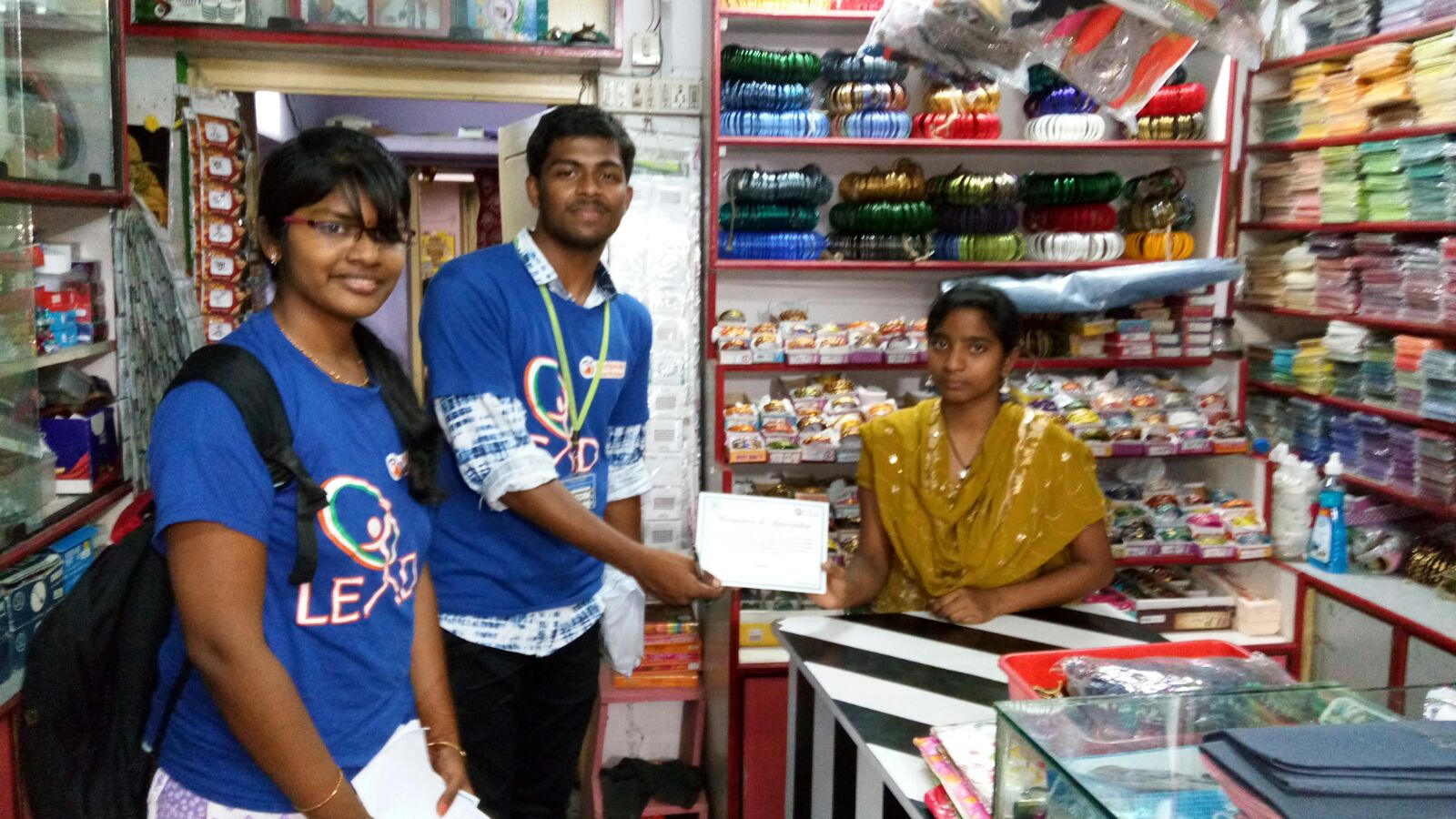My Story: Anirudh Ravi
Posted on Sunday, February 09, 2014 by LEAD
Anirudh Ravi (GIT, Belgaum)
“Success is not about money or fame. It’s about the internal satisfaction
you get from getting the job done.”
I always had an interest in contributing to
society. In fact, before college, my friends and I had goals to start our own NGO to help children of blind
schools throughout Bangalore. I
joined LEAD just over one year ago after starting college at GIT Belgaum because
the program catered to my interest for social service and his passion for
technology. Shortly after joining LEAD,
I completed my first project, “Electric Cycle”, an initiative to help
daily wage laborers, who rely heavily on cycles for transportation, preserve
some of their physical energy and travel faster at a low cost. My cycle, costing just Rs.
2,000, is powered by a motor with a rechargeable battery. The battery can last for up to 100km
and bring the cycle up to a speed of 35km per hour.
After the success from my first project, I dedicated myself to work on bigger challenges. Accumulating waste is undoubtedly one of the greatest
problems India is currently facing; a problem that assaults us on a daily
basis. We see it everywhere we
go-those mountains of trash that plague our neighborhoods and never seem to get
any smaller, and the nets of litter that cause our river water to turn black.
Many trust their cities to take on the waste burden and deposit their billions
of tons of waste into neatly planned landfills. Other individuals set their
waste aflame and watch it shrink to ashes. Our futile attempts to manage this
waste do more harm than good.
Landfills only segregate the problem and by the burning our trash, we
just create clouds of smoke filled with toxic fumes that pollute our air and
our vulnerable lungs.
This problem is not unique to India. Around the world, countries struggle to
find a healthy, long-term solution to manage their waste accumulation. While it’s true that some countries
have been managing waste more effectively than others, no country nor person
has yet to identify or implement a solution that can permanently protect us
from the dangers posed by accumulating waste.
The Trash-A-Nator
To solve this problem, I invented the Trash-A-Nator a
device that can burn up to 200 liters of dry waste in a short period of time.
The Trash-A-Nator may be a big name, but this machine was constructed with
simplicity in mind. The main
components of the Trash-A-Nator include a commonplace oil barrel, a burner, and
a blower. The oil barrel has a
capacity of 200 liters and is coated inside with heat resistant paint, which
can withstand temperatures up to 600⁰C.
A 300 watt blower is fit to the exterior of the barrel. The blower is the only part that
requires an external power source.
How It Works
Dry waste is placed into the barrel. A matchstick is used to set the waste
on fire. The lid is closed and the
blower is turned on. While the
waste is burning inside the barrel, the blower pumps oxygen into the barrel to
continue feeding the flames. In addition, the oxygen that is fed into the
barrel helps convert the deadly carbon monoxide byproduct of the burning into
carbon dioxide, which is healthier for our lungs and for the environment. A
mesh is attached to the top of the barrel to prevent heavy particles, such as
soot, from flying into the air. 90% of the waste will be completely burnt, and
the remaining 10% will be converted into ash.
Future Plans
The innovative nature of my project helped me win the "Best LEADer" award by Dr. T.V. Mohandas Pai at Yuva Summit 2014. As emissions for the Trash-A-Nator remain under the limits
set by the Karnataka State Pollution Control Board, this machine clearly has a
lot of potential to be marketed as a product. Furthermore, the Trash-A-Nator is
affordable: I estimate that once I receive more orders for the
Trash-A-Nator (he has already received two from major industries), the price
for the machine will probably run between Rs. 6,000 and Rs. 7,000. The current
Trash-A-Nator model is rather large and most suitable to be used by industries
that produce large amounts of waste.
However, I am currently working on building a smaller mode that
can be used in homes and purchased at a lower cost. I am also finding a
way to mix the remaining ash from the burnt waste with manure so it can be used
as plant fertilizer.
LEAD has given me a lot of really good opportunities. I've learned a lot, but I think the most important things I've gained are a platform to execute my ideas without fear of failure and the confidence to present my ideas without fear of criticism.
Subscribe to:
Post Comments (Atom)












No Response to "My Story: Anirudh Ravi"
Post a Comment